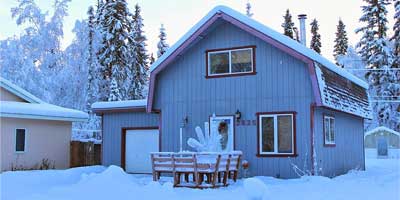 Mould spores are all around us. We are constantly breathing in mold, inside and outside. It is truly part of everyday life. Sometimes however it can be problematic when we get mold growth inside and where we do not want it. The growth of mold, however, can be prevented. Mold requires moisture, warmth and a food source in order to grow in your home.
Mould spores are all around us. We are constantly breathing in mold, inside and outside. It is truly part of everyday life. Sometimes however it can be problematic when we get mold growth inside and where we do not want it. The growth of mold, however, can be prevented. Mold requires moisture, warmth and a food source in order to grow in your home.
When you deprive mold of food, moisture, and warmth, you will stop it from growing but you won’t kill the mold that is already present.
The mold spores can and will stay dormant and begin growing again if they get moisture, warmth, and food. So, it’s essential to keep mold from growing in the first place.
If you live in a Canadian climate where you need to heat your home frequently, mold can start growing in the winter on your home’s inside walls, especially on the surfaces closest to the outside of your home.
Moisture that travels through the air from your basement, bathrooms, or kitchen may condense when it comes in contact with a cold wall.
One thing you can do to prevent mold growth is making sure your walls are well-insulated. Well-insulated walls can prevent condensation and mold, as well as cut down on your heating and cooling bills.
Here are some other steps you can take to prevent mold growth during the winter:
- During the cold season, make sure that your indoor humidity level is below 50 percent. If you use a humidifier, as many of us do in the winter, make sure it does not produce an excessive amount of humidity.
- Remove possible sources of mold growth by regularly vacuuming and cleaning. Pay close attention to bathrooms and other areas of your home that are likely to generate a lot of moisture. If you notice moisture, dry it right away.
- Use washable floor surfaces or area rugs rather than wall-to-wall carpeting in areas or rooms that have a moisture issue. It’s not usually a great idea to have carpeting in your entryway, for instance, if you live in a cooler, wet climate.
- Paper, books, and clothing are sources of food for mold, so don’t store them in humid parts of your home, such as your basement, especially close to the floor or walls. If you notice mold on this porous material they must be discarded.
- Leaks in your roof or windows need to be repaired ASAP.
- Make sure that your gutters and downspouts are clean and that the area under your downspouts is graded so that water from the roof flows away from your foundation. If necessary, extend your downspouts.
- In the bathroom and kitchen, use exhaust fans or open windows when producing moisture, such as taking a hot shower. Exhaust fans should be vented to the outdoors and not to an attic or crawl space.
- Make sure your clothes dryer is vented to the outdoors.
- Consider getting a dehumidifier for your basement. The cool basement floor and walls can be a source of moisture build-up, and a dehumidifier will control the humidity level and make it harder for mold to start growing.
- Make sure your attic is well insulated and ventilated. At the same time ensure it is the proper amount of insulation and not too much.
- If you have a crawl space under your house, cover the soil in the crawl space with waterproof polyethylene plastic. If your crawl space has vents, close the vents in the summer and keep them open in the winter.
- If you notice you have water problems in your basement or crawl space, clean up affected areas as quickly as possible and call an expert.
Mold can start growing in your home because of any number of issues. If you see mold in your home, contact a local expert in mold removal such as Mold Removal London
You can fill in the contact form at the bottom of the page and we would be happy to promptly answer any questions that you have regarding your Mold Situation.
Tags: Attic mold removal london, basement mold removal london, black mold removal london ontario, london mould removal, mold after water damage, mould removal services london, mould testing london
 Mould spores are all around us. We are constantly breathing in mold, inside and outside. It is truly part of everyday life. Sometimes however it can be problematic when we get mold growth inside and where we do not want it. The growth of mold, however, can be prevented. Mold requires moisture, warmth and a food source in order to grow in your home.
Mould spores are all around us. We are constantly breathing in mold, inside and outside. It is truly part of everyday life. Sometimes however it can be problematic when we get mold growth inside and where we do not want it. The growth of mold, however, can be prevented. Mold requires moisture, warmth and a food source in order to grow in your home.